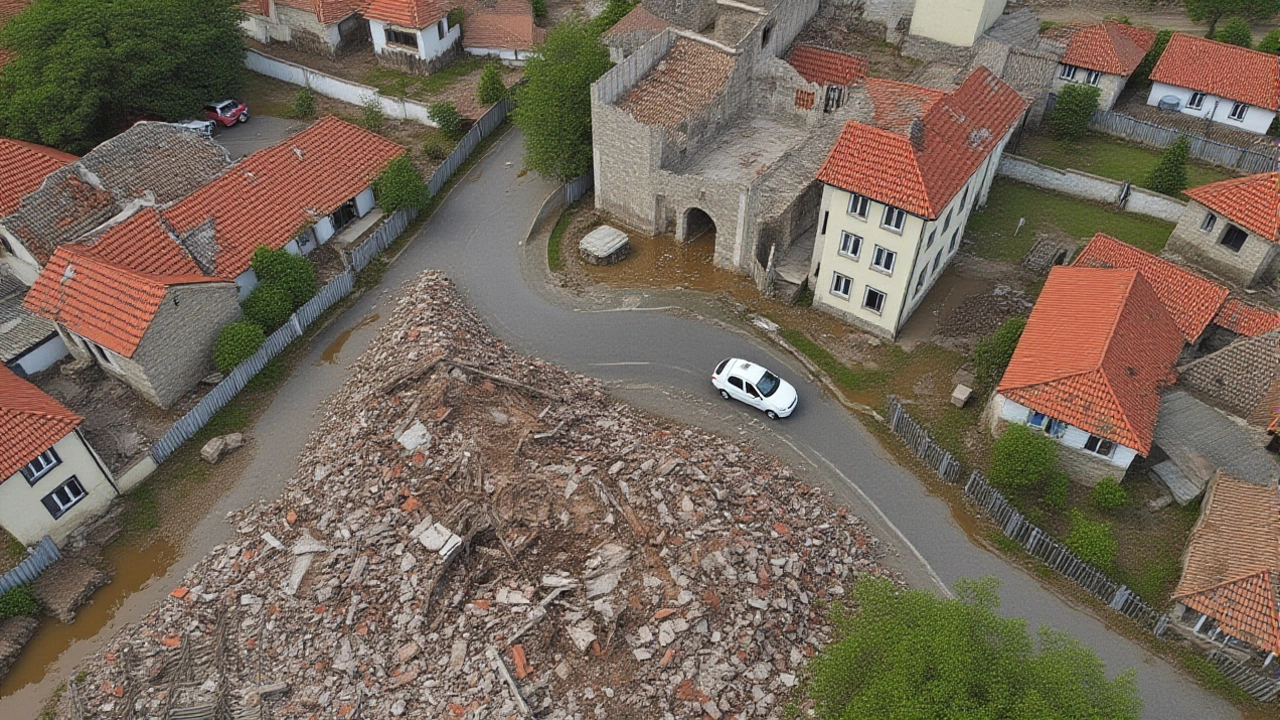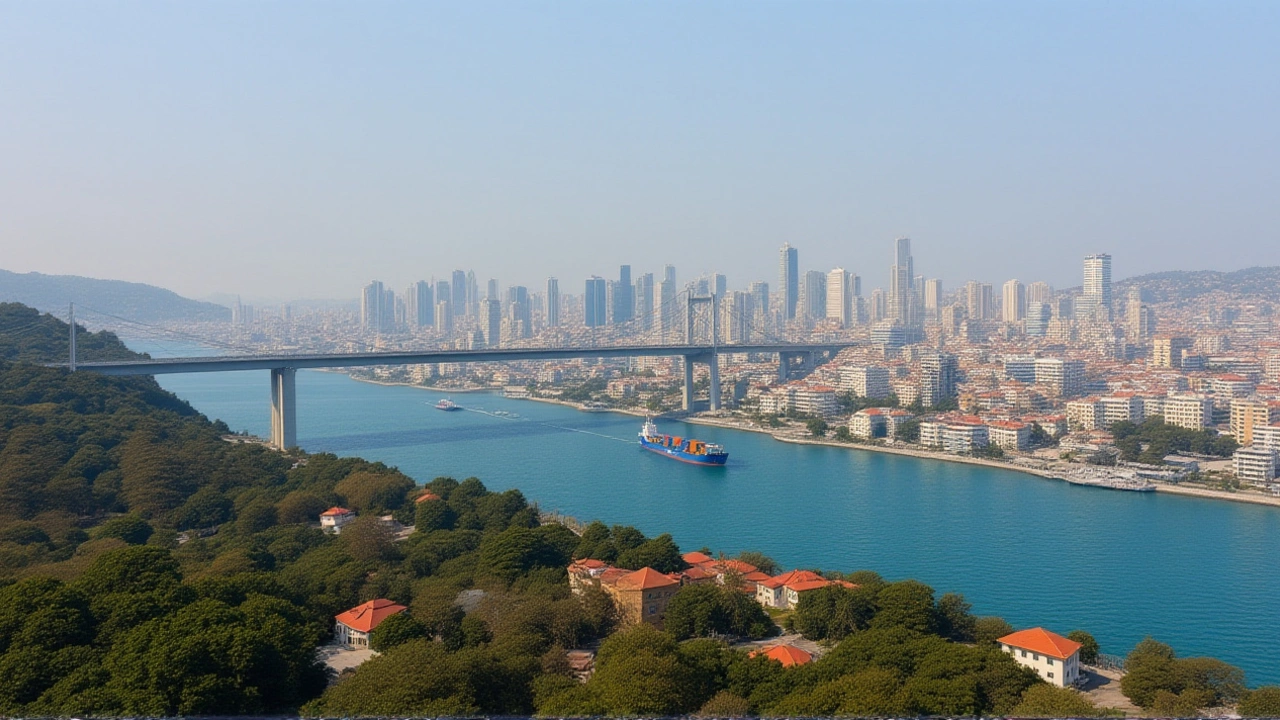M6.0 earthquake shakes western Türkiye near Sındırgı, injuring 66

At 10:48 p.m. local time on October 27, 2025, a magnitude 6.0 earthquake jolted western Türkiye, shaking buildings in Sındırgı and sending residents into the streets. The tremor struck just 131 kilometers northeast of Izmir, near the eastern edge of the aftershock zone spawned by a nearly identical quake just two months earlier. Sixty-six people were injured—22 of them in Sındırgı alone, where five buildings and a shop collapsed, walls crumbled, and a falling brick wall crushed a parked car. In nearby Gördes, a ceiling caved in and cracks spiderwebbed across living room walls. Schools shuttered, airports paused flights for runway inspections, and public halls opened their doors as emergency shelters. This wasn’t a random strike. It was the latest chapter in a tense geological story unfolding beneath the region’s soil.
The Ghosts of August: A Fault That Won’t Quiet Down
The August 10, 2025 M6.1 earthquake had already left scars. One man, an 82-year-old resident of Sındırgı, died after being pulled from the rubble of a collapsed apartment. Another, a 66-year-old man in Gördes, was killed when plaster and bricks tumbled from a mosque ceiling. A total of 729 buildings were severely damaged, 61 more slightly so, and 73 mosques bore the brunt—two minarets gone, others leaning. The most chilling detail? Most of the collapsed structures were abandoned. The dead weren’t caught in occupied homes. They were in places people had already left behind.Authorities responded swiftly: 1,100 search-and-rescue workers, 50 damage assessment teams, and a criminal investigation. The owner and contractor of the Sındırgı building where the fatality occurred were taken into custody on suspicion of negligence. Meanwhile, a sinkhole opened up near Odunpazarı in Eskişehir Province, as if the earth itself was exhaling after the blow.
Why This Region Can’t Catch a Break
Western Türkiye sits on one of the planet’s most restless seams: the Simav Fault Zone. It’s not a single crack but a sprawling network of east-west trending normal faults, where the crust is slowly being pulled apart. Why? Deep beneath the Aegean Sea, the tectonic slab is sinking—like a heavy curtain dragging down into the mantle. That downward tug stretches the land above, and when the stress snaps, it’s not a gentle release. It’s a rupture.The August quake happened near the fault’s western edge. The aftershocks that followed—dozens of them—mapped out a 20-kilometer-wide corridor stretching east and south. Then, on October 27, the earth spoke again. This time, the epicenter was near the eastern flank of that aftershock zone. Geologists analyzing the data from satellite radar (COMET’s Sentinel-1 InSAR imagery) found the October quake wasn’t pure normal faulting. It was oblique: a sideways lurch mixed with a downward dip. In simpler terms, the ground didn’t just fall—it slid sideways as it dropped.
Who’s Affected—and Who’s Still at Risk
The immediate victims are the families in Sındırgı and Gördes, many of whom slept through the first quake in August and are now too afraid to sleep at all. But the ripple extends further. Istanbul Airport and Sabiha Gökçen International Airport halted operations for nearly two hours. Not because the quakes hit there—but because safety protocols demand runway checks after any regional tremor above M5.5. That’s a logistical headache for thousands of travelers and a financial hit for airlines.And then there’s the long-term fear. The August quake left 729 buildings structurally compromised. Many of them are still standing. But how long will they hold? Insurance claims are piling up. Local contractors are scrambling to meet new seismic codes. Meanwhile, the government’s emergency response teams are already on standby. “We don’t know if this is the end of the sequence,” said Dr. Elif Karadağ, a seismologist at Istanbul University’s Geophysics Institute. “What we do know is that the fault is still adjusting. We’ve seen this pattern before: a mainshock, then a cluster, then another mainshock weeks later. It’s not unusual. It’s the system working.”

What Comes Next? A Pattern, Not a Pause
Historical records show that earthquakes of M6.0 or higher strike western Türkiye roughly every three to four years. The last major one before August 2025 was in 2021 near Denizli. Before that, 2019 in İzmir. The pattern is clear: stress builds, releases in a violent burst, then trickles out through aftershocks—until the next buildup begins. The October 27 event didn’t end the sequence. It extended it.Geologists are watching for two things: more aftershocks in the 4.0–5.0 range over the next six weeks, and any signs of movement along adjacent faults. The Simav Fault doesn’t operate in isolation. It’s connected to the Dumlupınar and Gediz faults. A rupture here could trigger tension there. Satellite data shows the ground is still settling. Blue zones—areas of subsidence—are deepening in places. Red zones—uplifted land—are swelling. The earth is still breathing.
Why This Matters to Everyone
This isn’t just a local tragedy. It’s a warning. Türkiye’s urban centers are growing fast. New buildings go up, but retrofitting old ones? That’s expensive. And slow. The August quake proved that abandoned structures can kill. The October quake proved that even inhabited ones aren’t safe if they’re poorly built. In a country where nearly 70% of the population lives in seismic zones, every tremor is a rehearsal for the next big one.There’s no such thing as a “safe” earthquake. But there is such a thing as being prepared. The government has issued new building guidelines. Engineers are mapping fault lines with laser precision. Citizens are being trained in emergency drills. But time is running out. The next M6.0 isn’t a question of if. It’s a question of when.
Frequently Asked Questions
Why did the October 27 earthquake happen so soon after the August one?
The August 10 M6.1 quake released a large amount of stress along the Simav Fault, but not all of it. The October 27 M6.0 event occurred near the eastern edge of the resulting aftershock zone, indicating the fault system was still adjusting. This is typical in tectonically active regions—stress migrates, and subsequent quakes can occur weeks or months later as the crust settles into a new equilibrium.
Are the collapsed buildings in Sındırgı and Gördes a sign of poor construction?
Yes, in part. While some collapsed structures were abandoned, others were occupied and showed signs of structural weakness. After the August quake, authorities arrested the owner and contractor of the fatal Sındırgı building for negligence. Many older buildings in western Türkiye, especially those built before 2000, lack modern seismic reinforcement. Even if they appear intact, they may not withstand repeated tremors.
Could this lead to a larger earthquake, like M7.0?
Unlikely. Geological data shows the Simav Fault Zone doesn’t typically produce earthquakes above M6.5. The crust here is too thin and fragmented to accumulate the massive stress needed for a M7.0 event. That’s not to say it’s safe—M6.0 quakes are still devastating. But the region’s seismic character is defined by frequent, moderate events, not catastrophic megathrusts like those seen in eastern Türkiye.
How are authorities monitoring future risks?
Turkey’s AFAD disaster agency, alongside international partners like COMET, is using satellite radar (InSAR) to track ground deformation down to millimeter precision. Seismometers across the region are feeding real-time data into early warning systems. Schools and public buildings are being retrofitted, and new construction now follows stricter codes. But public awareness remains uneven—especially in rural areas where resources are scarce.
Why did airports shut down if the quake was far away?
Airports in Istanbul and Izmir follow strict safety protocols: any earthquake above M5.5 in the broader region triggers runway inspections. Even a minor tremor can cause micro-cracks in pavement or shift navigation equipment. Though no damage was found at either airport, the shutdowns were precautionary—ensuring no aircraft took off or landed on compromised surfaces. These delays affect thousands daily, but safety overrides convenience.
How often do M6.0+ earthquakes occur in western Türkiye?
On average, earthquakes of magnitude 6.0 or higher strike western Türkiye every three to four years. The region has seen M6.1 events in 2021 (Denizli), 2019 (İzmir), and now 2025 (Balıkesir). These aren’t random—they’re part of a predictable stress-release cycle tied to the Aegean slab’s subduction. The pattern is well-documented. What’s unpredictable is exactly where and when the next rupture will occur.


